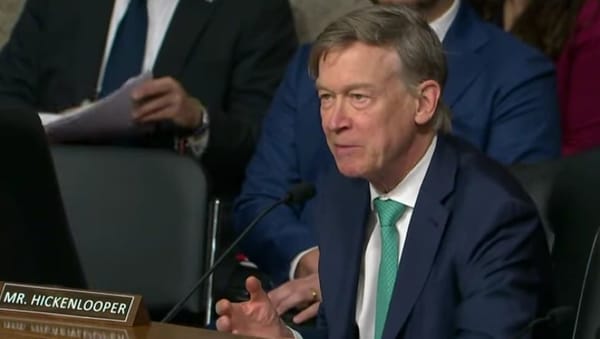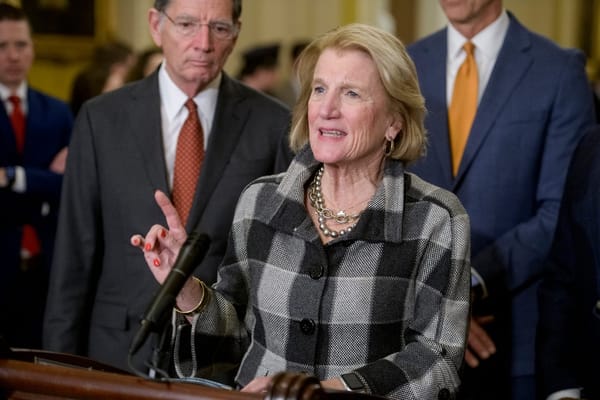Telecom and Transportation Should Be Focus of Infrastructure Investments, Says Think Tank
WASHINGTON, July 28 – By combining better public information, market mechanisms and smarter systems of subsidization, the government can play a positive role in funding infrastructure investments in telecommunications, according to three reports released Friday by the Brookings Institution.
WASHINGTON, July 28 – By combining better public information, market mechanisms and smarter systems of subsidization, the government can play a positive role in funding infrastructure investments in telecommunications, according to three reports released Friday by the Brookings Institution.
The papers, released on Friday at an event that also featured an address by Virginia Gov. Tim Kaine, are part of a Brookings Institution initiative promoting investments in infrastructure – both physical, transportation investments, as well as new ways to spur improvements in the telecommunications infrastructure.
“No economy improves with a declining infrastructure,” said Kaine, a Democrat. “Unless you make that high-tech investment easy by telecom access, you won’t get” improvements in your state’s economic condition, he said.
Brookings, a liberal-leaning think tank, released the reports as part of an initiative dubbed the “Hamilton Project.” The project seeks to put forward policy ideas that “embrac[e] a role for effective government in making needed public investments,” according to the think tank.
Friday’s event featured the release of six reports: three on transportation, two on telecommunications, and an overview report with recommendations on both subjects.
“The rapid page of technological progress in telecommunications and the widespread dispersion of new products and services… may present an appearance that all is well in this sector,” according to the overview report, by Manasi Deshpande and Douglas Elmendorf.
However, the overview report continued, “evidence indicates that the United States lags behind other industrial nations in broadband access and its concomitant economic and social benefits.”
In addition to two panel discussion about telecom and transportation, Friday’s event featured speeches by Kaine and former Clinton administration treasury secretaries Lawrence Summers and Robert Rubin.
As with Summers and Rubin, who addressed the role that physical infrastructure improvements can have upon the economy, Kaine spoke primarily about transportation-related investments.
But Kaine specifically linked investments in high-speed internet services to transportation improvements.
“The work we are doing in northern Virginia on broadband is helping transportation growth,” he said, adding that better broadband availability permits more people to telecommute. That takes some of the strain off the transportation system.
Kaine also said spoke about the state’s investment of $300 million into a broadband networks in rural Virginia. Although much of the money came from the universal service fund, a subsidization system for rural and education-related telecommunications, the funds were supplemented by half of the state’s proceeds from the class-action tobacco litigation of the 1990s.
“We took half of the money, and we invested in the tobacco-growing regions of south side and southwest Virginia, and much of that money is going to broadband deployment,” said Kaine.
As a result, “88 percent of the industrial parks in Virginia now have the best access to high-speed telecom” anywhere in the country, he said. That kind of access is necessary to promote economic development, create jobs, and keep people off the roads in more congested parts of the Virginia, he said.
Kaine also addressed the issue of broadband mapping, and efforts by Virginia to better understand the broadband options available to its citizens.
“It is amazing that we will be one of the first states next year with precise data on what percentage of residences have telecom access right at their doorstep,” Kaine said in his speech. “Even getting that data was difficult. But we have a measurement project in place where we are getting propriety information in appropriate ways [and] can measure the percentages” with broadband access.
In the question-and-answer-session, this reporter asked Kaine to elaborate on whether Virginia had agreed to shield the names of carriers – and if so, why – from its statewide broadband map.
Kaine replied that the broadband carriers “would share information with us but only if their competitors don’t get to see it, and if it is held in a proprietary way.”
But he said that “there will probably be a second step of what we’ll do, where we say, ‘how can we take the information now that we have it, and make that information available for Virginia citizens so that they will know what choices they have.’” (See transcript here.)
Of the two papers devoted to telecommunications released by the project on Friday, one addressed ways to bring broadband to unserved communities, and the other addressed ways to better exploit the promise of electromagnetic spectrum by making radio frequencies available for broadband.
In “Bringing Broadband to Unserved Communities,” Jon Peha, an engineering professor at Carnegie Mellon University, proposed that the federal government provide incentives for companies to build broadband in rural areas by holding a “reverse auction” whereby carriers would bid to provide broadband in a particular areas at the lowest possible cost.
“Reverse auctions” – so called because bidders seek to be paid to accomplish a burden rather than paying to obtain a benefit – have previously been proposed for rural telecommunications. They have been opposed by rural telephone companies, which are currently paid based upon their expenses – and which are generally quite high.
Peha also suggested that the obligations purchased in a reverse auction be fully tradable. “The idea is an extension of pollution permits – one of the greatest innovations in pollution reduction,” Peha wrote in his paper. “By giving individual polluters greater flexibility, tradable permits allow an industry as a whole to meet specific objectives for pollution reduction at the minimum cost.”
Here, of course, the objective is efficiently providing universal broadband, rather than reducing pollution. An additional proposal by Peha calls for the Federal Communication Commission to allow the use of “white spaces,” or the vacant channels on the television band.
In “The Untapped Promise of Wireless Spectrum,” Philip Weiser, a professor of law and telecommunications at the University of Colorado, makes a three-fold proposal for tapping the promise of wireless communications.
First, Weiser wants the FCC to create “an easily accessible and transparent database that identifies (and exposes) all licensed bands of spectrum, a contact person for the licensee, and stated terms for the opportunity to lease access” to the spectrum. This would be accompanied by policy changes encourging private parties to inform the agency when spectrum holders are making poor use of their spectrum.
Second, Weiser urges “liberating the UHF broadband spectrum,” or those portions of the Ultra-High Frequency television band currently occupied by television broadcasters. Weiser’s proposal appears to be at odds with Peha’s “white spaces” proposal in that Weiser urges that broadcasters be effectively cleared from their spaces on the spectrum, rather than finding a way for broadband-capable devices to co-exist with digital television broadcasters.
Third, Weiser wants to recharter the FCC so that it will be less susceptible to “the art of spectrum lobbying,” or the easily ability for incumbents to use the agency as an anti-competitive tool against new market entrants.
Blair Levin, an analyst with Stifel Nicolaus and chief of staff to former FCC Chairman Reed Hundt, in the Clinton administration, offered critiques of both Peha’s and Weiser’s proposals.
The “Hamilton Project” is named after Alexander Hamilton, the first U.S. treasury secretary and a noted proponent of “internal improvements” in infrastructure.
From January 2007 to June 2008, the project was led by Jason Furman, a former advisory to presidential candidate John Kerry and the the newly appointed director of economic policy for the presidential campaign of Sen. Barack Obama, D-Ill.
Editor’s Note:
During the question and answer session, I had the opportunity to ask Gov. Kaine about whether — and if so, why — Virginia had decided to shield the names of carriers on its map of broadband availability in Virginia. His reply is summarized above. The full transcript of my question and his answer is available here.
In a public filing on July 17, 2008, BroadbandCensus.com urged the Federal Communications Commission to revise its current policy of witholding the names of the broadband providers that serve a particular ZIP code, or a particular census tract. See the filing here.
-Drew Clark, Editor, BroadbandCensus.com
Documents Referenced in this Article:
- Investing in America’s Infrastructure: From Bridges to Broadband, Brookings Institution event
- An Economic Strategy for Investing in America’s Infrastructure, Brookings Institution report by Manasi Deshpande and Douglas Elmendorf
- Bringing Broadband to Unserved Communities, Brookings Institution report by Jon Peha
- The Untapped Promise of Wireless Spectrum, Brookings Institution report by Philip Weiser
- Transcript of Gov. Kaine’s Response to Question of Including Carrier Data in Virginia’s Broadband Map (BroadbandCensus.com, July 28)










Member discussion